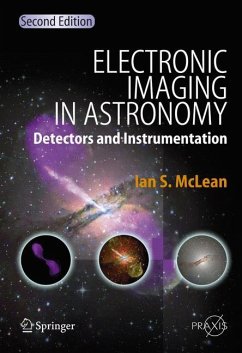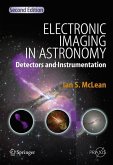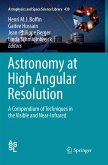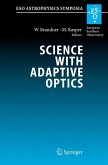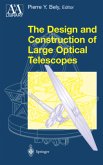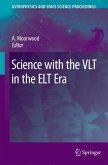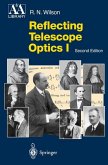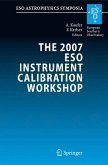The second edition of Electronic Imaging in Astronomy: Detectors and Instrumentation describes the remarkable developments that have taken place in astronomical detectors and instrumentation in recent years - from the invention of the charge-coupled device (CCD) in 1970 to the current era of very large telescopes, such as the Keck 10-meter telescopes in Hawaii with their laser guide-star adaptive optics which rival the image quality of the Hubble Space Telescope.
Authored by one of the world's foremost experts on the design and development of electronic imaging systems for astronomy, this book has been written on several levels to appeal to a broad readership. Mathematical expositions are designed to encourage a wider audience, especially among the growing community of amateur astronomers with small telescopes with CCD cameras. The book can be used at the college level for an introductory course on modern astronomical detectors and instruments, and as a supplement fora practical or laboratory class.
Authored by one of the world's foremost experts on the design and development of electronic imaging systems for astronomy, this book has been written on several levels to appeal to a broad readership. Mathematical expositions are designed to encourage a wider audience, especially among the growing community of amateur astronomers with small telescopes with CCD cameras. The book can be used at the college level for an introductory course on modern astronomical detectors and instruments, and as a supplement fora practical or laboratory class.
From the reviews of the second edition:
"The book literally covers everything you ever wanted to know about the design and technology behind CCDs. Well written and informative, the book is littered with technical diagrams and useful equations for anyone interested in either developing their own CCD device or writing image processing algorithms and plug-ins. Not only that ... this is a book that every university undergraduate studying instrumentation should probably have on their bookshelf." (Nick Howes, Astronomy Now, January, 2009)
"McLean ... provides an excellent primer for those with a technical interest in these amazing devices. ... the book is a compendium of astronomical methods and instrumentation. ... McLean's book ... would be an excellent college-level resource. In fact, it should be on the shelf of anyone who wants a firm technical background in astronomical methods and instrumentation. Summing Up: Highly recommended. Upper-division undergraduate through professional collections." (T. D. Oswalt, Choice, Vol. 46 (7), March, 2009)
"This is the second edition of a book whose purpose is to explain the workings of electronic detectors and instruments. ... This ambitious book is in part an attempt to provide an overview of just what your strange-looking instrument is doing. ... this is an excellent book, packed with information and written in a clear and accessible style which will make it invaluable to any student or supervisor. Highly recommended." (Paul O'Brien, The Observatory, Vol. 129 (1210), June, 2009)
"The book literally covers everything you ever wanted to know about the design and technology behind CCDs. Well written and informative, the book is littered with technical diagrams and useful equations for anyone interested in either developing their own CCD device or writing image processing algorithms and plug-ins. Not only that ... this is a book that every university undergraduate studying instrumentation should probably have on their bookshelf." (Nick Howes, Astronomy Now, January, 2009)
"McLean ... provides an excellent primer for those with a technical interest in these amazing devices. ... the book is a compendium of astronomical methods and instrumentation. ... McLean's book ... would be an excellent college-level resource. In fact, it should be on the shelf of anyone who wants a firm technical background in astronomical methods and instrumentation. Summing Up: Highly recommended. Upper-division undergraduate through professional collections." (T. D. Oswalt, Choice, Vol. 46 (7), March, 2009)
"This is the second edition of a book whose purpose is to explain the workings of electronic detectors and instruments. ... This ambitious book is in part an attempt to provide an overview of just what your strange-looking instrument is doing. ... this is an excellent book, packed with information and written in a clear and accessible style which will make it invaluable to any student or supervisor. Highly recommended." (Paul O'Brien, The Observatory, Vol. 129 (1210), June, 2009)
Aus den Rezensionen zur 2. Auflage: "Die 2. Auflage ... ist als Einführungstext für Studenten mittlerer Semester geeignet, als begleitende Lektüre für Praktika oder selbstständiges Arbeiten. In 14 Kapiteln beschreibt der Autor ausführlich und umfassend alle Aspekte der astronomischen Bildaufzeichnung. ... Die Darstellung ist ... sehr praxisorientiert. ... Der Stil ist ... immer lebendig, es ist nie ein trockenes Lehrbuch. ... Sehr hilfreich sind auch die Zusammmenfassungen am Ende jedes Kapitels. Der eifrige Leser danach kann mit Übungsaufgaben sein erworbenes Wissen überprüfen. ... Für angehende Praktiker eine empfehlenswerte Lektüre ..." (JOSEF FRIED, in: Sterne und Weltraum, 2009, Issue 10, S. 106)

